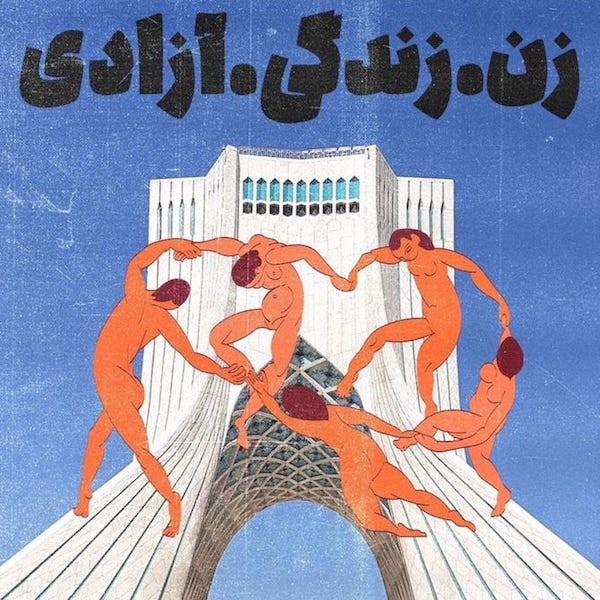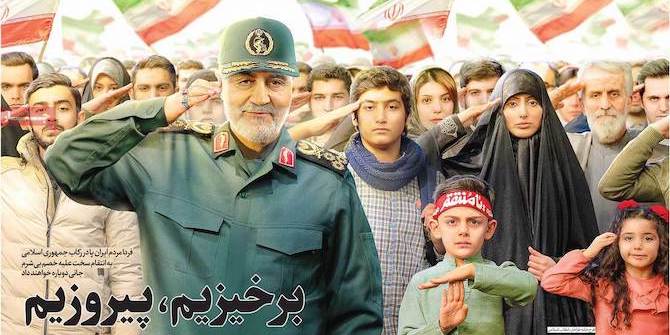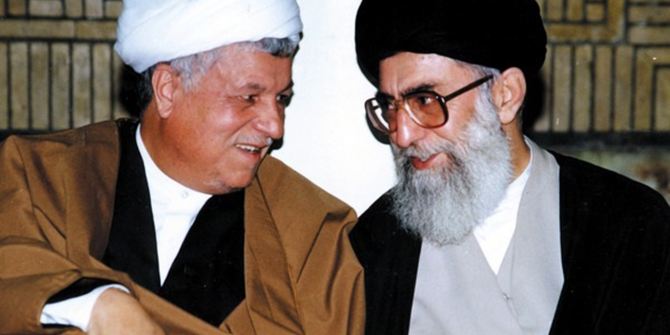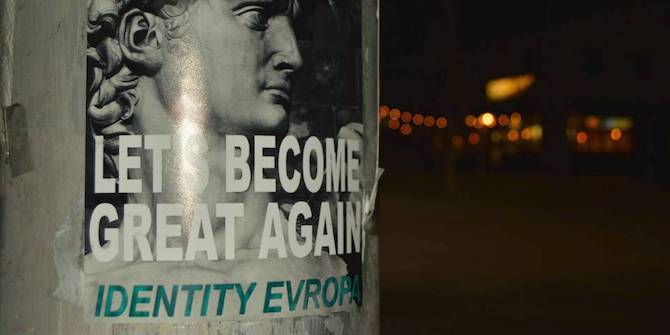by Shabnam Holliday

Iran’s current protests are not only significant because they challenge the Islamic Republic as a political system, they also challenge assumptions in global politics. They highlight that Iranians are global citizens. Like so many social and protest movements around the globe, they reject gender, religious, and racial violence, and demand dignity and human rights.
The current protests were sparked by the death of the Kurdish 22-year-old woman, Jîna Mahsa Amini, after she was arrested for what the Islamic Republic of Iran considers improper hejab (headscarf). In response, schoolgirls and women, with the solidarity of boys and men, came out to protest against Jîna’s death and compulsory hejab by removing their hejab, cutting their hair, and using the slogan ‘woman, life, freedom’. This slogan has its roots in the Kurdish women’s freedom movement and can be found in Iran’s protests in the Kurdish, Persian, Balochi and Azeri languages. In turn, this slogan has highlighted to the outside world that Iran is made up of multiple nations (mellat) and language groups.
Seen as Iran’s first feminist uprising in response to a political system that subjugates women, referred to as gender apartheid, the protests have quickly developed into a widespread desire for revolution. Primarily led by generation Z, but with the support of their parents and grandparents, the protestors demand freedom in their everyday lives. This generation, like their peers around the globe, wants to hang out freely; they want LGBQT rights; and are concerned about the environment. The protests also highlight the very different economic situations and discrimination faced by the Kurdish, Baloch, Bahai and Azeri communities, among others. Jîna’s death is therefore symptomatic of a political system that has no regard for basic human rights. The Islamic Republic’s response to protests has been extensive and horrific violence, including executions .
Iran has a long history of protest and revolution before and during the Islamic Republic. Crucially, women have been active political agents, alongside men, not only under the Islamic Republic but also in bringing about the 1979 Revolution and going back to Iran’s Constitutional Revolution. What constitutes a revolution is disputed. On the one hand, it is seen as a change in the political system, and on the other, it is a significant challenge to an existing status quo. In Iran we have seen both. Iran’s 1979 Revolution, with the removal of the Pahlavi monarchy and subsequent establishment of a theocracy, the Islamic Republic, brought about a change in the political system. Iran’s 2009/10 popular uprising began with protests in response to electoral fraud evident in the ‘re-election’ of the incumbent Mahmoud Ahmadinejad as president. There wasn’t widespread desire for a new revolution, but rather a hope for reform. Nevertheless, the Green Movement significantly challenged the political system in that the Islamic Republic responded with violence.
Unlike 2009/10, the current protests demonstrate a widespread desire for a new revolution, and they significantly challenge the status quo. There is an explicit desire for a change in the political system with the removal of the Islamic Republic, the absolute rejection of its reform, and a desire to reclaim Iran. This is evident in the consistency of slogans rejecting the Islamic Republic; the widespread protests throughout Iran and across socio-economic, generational, political, gender, and identity groups; and the persistent protest despite violence by security forces. The desire for a new revolution has progressive politics, workers’ rights and human rights at its core.
The agency of Iranians, in all their diversity and multiple identities, to reject authoritarian and violent politics is not new, nor are such ideas unique to Iran. Such hopes and desires have been reflected in the last decade’s Arab revolts; in Kurdish politics; and in Iraq’s Tishreen movement and Lebanon’s 2019 uprising among others. Nevertheless, the significance of this new revolution is that it is simultaneously led by women demanding ownership of their bodies, indicating the desire for progressive politics, in a predominantly Muslim state, rejects political Islam, and is also in the Middle East. Thus, this political project challenges other regional powers that use an understanding of Islam to justify the survival of an authoritarian political system. Beyond the Middle East, such a revolution challenges assumptions about who ‘owns’ democracy, progressive politics, and feminism. It is not just the ‘West’.
The rejection of the Islamic Republic as a political system also indicates the rejection of the Islamic Republic’s narrative of anti-imperialism. This challenges other nominally post-colonial projects built on ‘anti-imperialism’ and ‘anti-westernism’, such as those of Vladimir Putin and Bashar al-Assad. Indeed, the Islamic Republic sees itself as a leader of ‘anti-imperialism’. This is a powerful narrative in a postcolonial context where colonialism was or is European. However, the role played by Russia and the Islamic Republic in Syria; the use of Iranian drones by Russia to attack Ukrainian infrastructure; and the violence against protestors in Iran highlight contradictions in this narrative if we are to see anti-imperialism and post-colonialism as freedom from oppression. Furthermore, the current protests and demands demonstrate that the legacy of colonialism can be appreciated and addressed alongside a human desire for dignity. This does not mean a denial of the legacy of European colonialism or US interference in Iran’s affairs.
So, revolutions in one part of the world, in this case Iran, matter to the rest of the world. The 1979 Revolution and subsequent establishment of an Islamist republic was significant beyond Iran. Now, Iran’s ‘woman, life, freedom’ uprising highlights battles over the values that govern world order and global politics.
[To read more on this and everything Middle East, the LSE Middle East Centre Library is now open for browsing and borrowing for LSE students and staff. For more information, please visit the MEC Library page.]







3 Comments